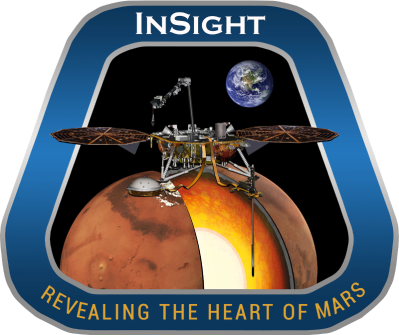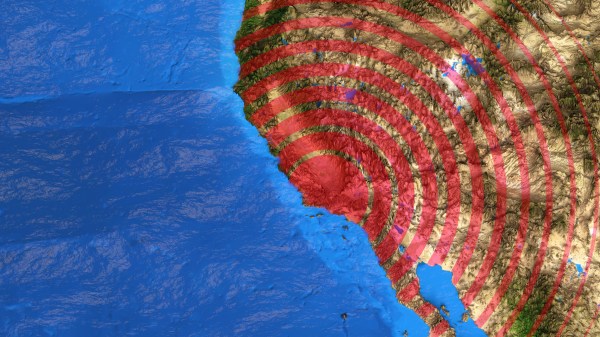 One of the most sought after substances in the Universe is water – especially in its liquid form – as its presence on a planet makes the presence of life (as we know it) significantly more likely. While there are potentially oceans worth of liquid water on e.g. Jupiter’s moon Europa, for now Mars is significantly easier to explore as evidenced by the many probes which we got onto its surface so far. One of these was the InSight probe, which was capable of a unique feat: looking inside the planet’s crust with its seismometer to perform geophysical measurements. These measurements have now led to the fascinating prospect that liquid water may in fact exist on Mars right now, according to a paper published by [Vashan Wright] and colleagues in PNAS (with easy-read BBC coverage). Continue reading “Possible Discovery Of Liquid Water In Mars’ Mid-Crust By The Insight Lander”
One of the most sought after substances in the Universe is water – especially in its liquid form – as its presence on a planet makes the presence of life (as we know it) significantly more likely. While there are potentially oceans worth of liquid water on e.g. Jupiter’s moon Europa, for now Mars is significantly easier to explore as evidenced by the many probes which we got onto its surface so far. One of these was the InSight probe, which was capable of a unique feat: looking inside the planet’s crust with its seismometer to perform geophysical measurements. These measurements have now led to the fascinating prospect that liquid water may in fact exist on Mars right now, according to a paper published by [Vashan Wright] and colleagues in PNAS (with easy-read BBC coverage). Continue reading “Possible Discovery Of Liquid Water In Mars’ Mid-Crust By The Insight Lander”
seismology3 Articles
Watch Earthquake Roll Across A Continent In Seismograph Visualization Video
If your only exposure to seismologists at work is through film and television, you can be forgiven for thinking they still lay out rolls of paper to examine lines of ink under a magnifying glass. The reality is far more interesting in a field that has eagerly adopted all available technology. A dramatic demonstration of modern earthquake data gathering, processing, and visualization was Tweeted by @IRIS_EPO following a central California quake on July 4th, 2019. In this video can see the quake’s energy propagate across the continental United States in multiple waves of varying speed and intensity. The video is embedded below, but click through to the Twitter thread too as it has a lot more explanation.
The acronym IRIS EPO expands out to Incorporated Research Institutions for Seismology, Education and Public Outreach. We agree with their publicity mission; more people need to know how cool modern seismology is. By combining information from thousands of seismometers, we could see forces that we could not see from any individual location. IRIS makes seismic data available to researchers (or curious data science hackers) in a vast historical database or a real time data stream. Data compilations are presented in several different forms, this particular video is a GMV or Ground Motion Visualization. Significant events like the 4th of July earthquake get their own GMV page where we can see additional details, like the fact this visualization compiled data from 2,132 stations.
If this stirred up interest in seismology, you can join in the fun of networked seismic data. A simple seismograph can be built from quite humble components, but of course there are specially designed chips for the task as well.
Continue reading “Watch Earthquake Roll Across A Continent In Seismograph Visualization Video”
Hackaday Prize Entry: Device For Seismic Noise Analysis
Whenever there is an earthquake somewhere in the world, our TV screens fill with images of seismic data. Those news report graphics with simplified bite-sized diagrams that inform the masses, but usually get something wrong. Among the images there will invariably be one of a chart recorder drawing a significant earthquake trace on paper, which makes good TV, but is probably miles away from the state of the art in seismology.
We are not seismologists here at Hackaday, so it was extremely interesting to find [Michael D]’s project, Device for Seismic Noise Analysis. In it, he gives a basic primer in seismic sensors, and outlines his take on the subject, a sensitive wideband seismic sensor designed to capture the seismic background noise. It seems that many seismic sensors are designed to capture big events, yet ignore the noise between them from which using suitable software one can glean advance warning of seismic events.
The sensor is a simple design, a ball of significant mass rests upon three piezoelectric microphone elements spaced at 120 degree intervals. An extremely high impedance op-amp circuit converts and integrates the charge from the piezo element to a voltage that can be read by an Arduino Yun which harvests the data. It is a bold claim, but the device is said to have already given advance warning of minor seismic events near its Tennessee test site.
Seismology has featured here a few times before. There was this seismometer using a subwoofer as its sensor, and this project using commercial geophones, just to name a couple of examples.

















